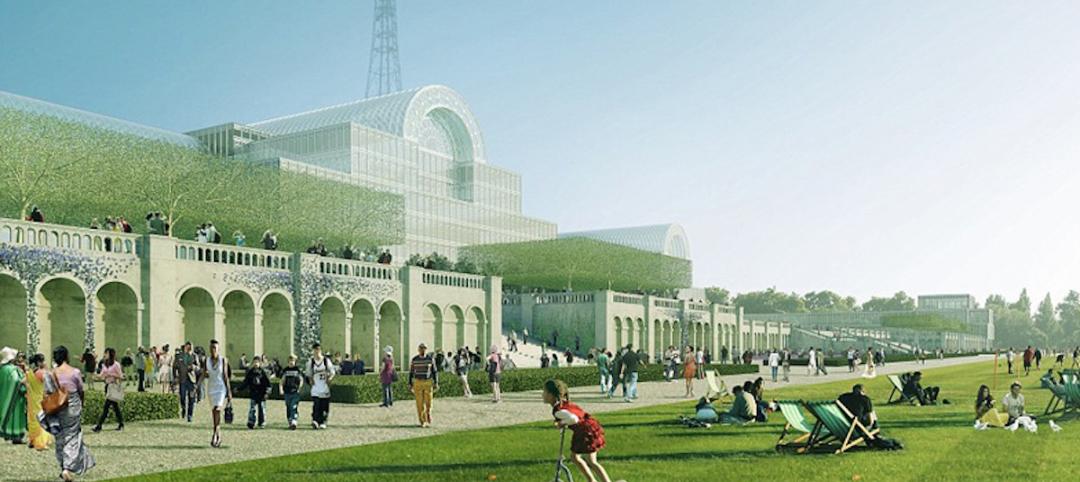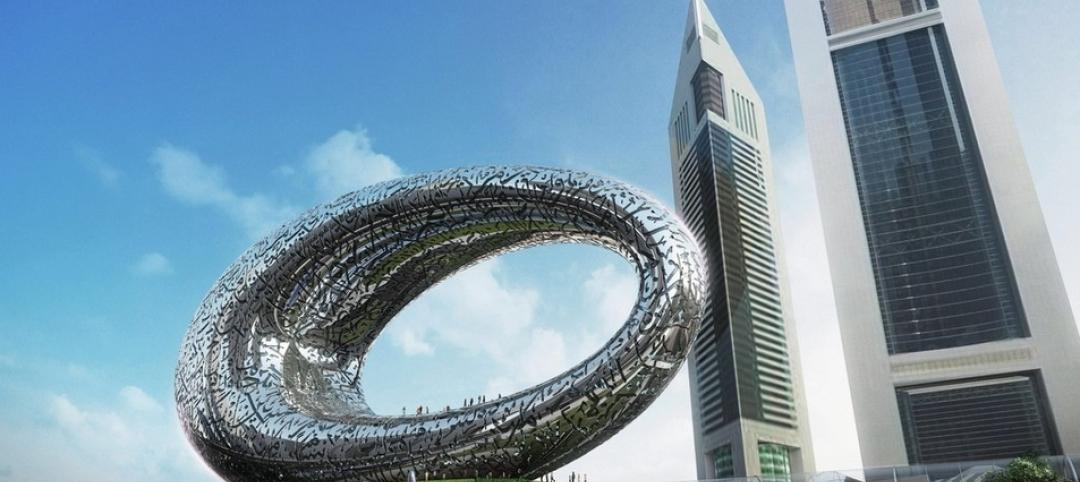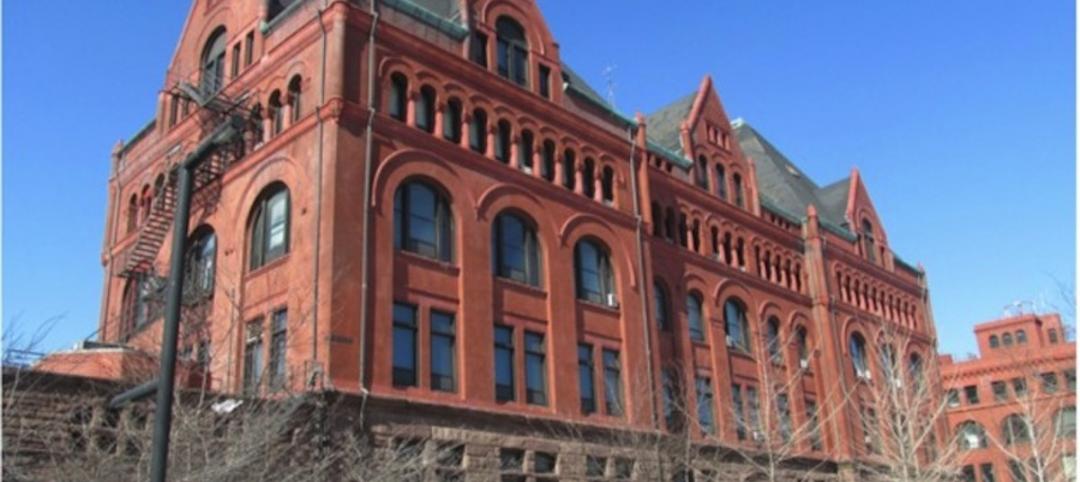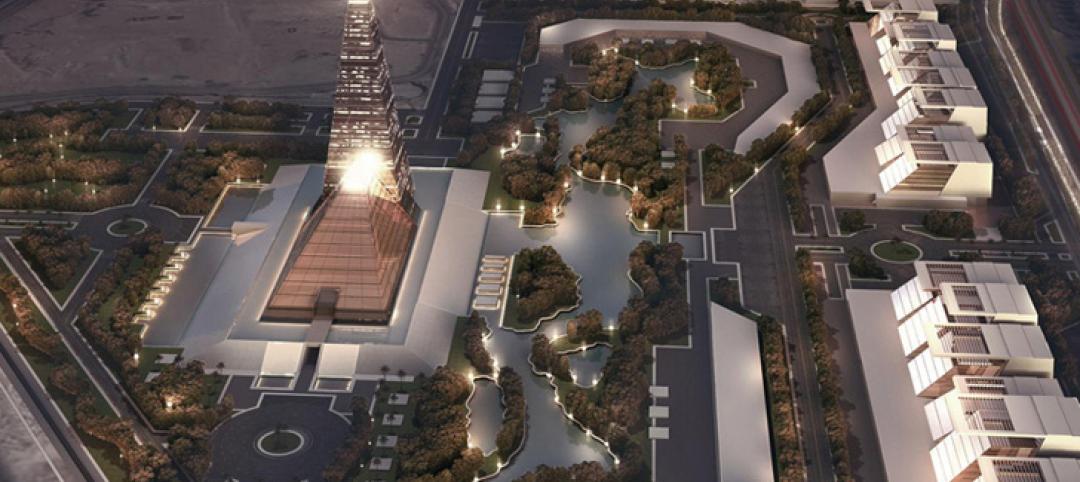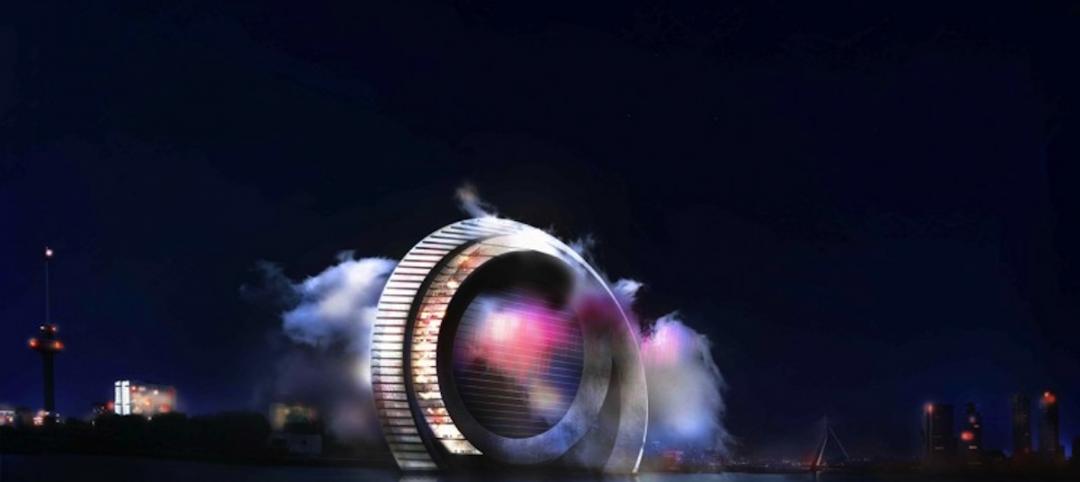
Designed by H. H. Richardson in the 1870s to serve the city's burgeoning Back Bay neighborhood, Trinity Church in the City of Boston would come to represent the essence of the Richardsonian Romanesque style, with its clay tile roof, abundant use of polychromy, rough-faced stone, heavy arches, and massive size. Its 9,500 tons rested on four elephantine granite pyramids, which were set atop 4,000 wooden pilings to prevent the structure from sinking into Back Bay's marshy wetlands.
 |
| PHOTOS: SHAWMUT DESIGN AND CONSTRUCTION |
Some 125 years after its completion, Trinity Church had grown into one of the largest Episcopal congregations in the country, holding 19 services a week and averaging 1,200 worshippers on Sundays. Trinity also drew 100,000 tourists a year, thanks to its status as a National Historic Landmark and one of the AIA's “10 Most Important Buildings in the United States.” Add to that more than 140 community programs that kept meeting rooms bustling 15 hours a day, six days a week, and it was easy to see how Trinity needed room for expansion.
Unfortunately, the passage of time had taken its toll on the building. The church's precious murals, stained glass, and intricate stonework had all been marred by a century-plus of wear. Worse, below ground, fluctuating water tables had damaged the wood pilings, threatening Trinity's very stability.
 |
| PHOTOS: SHAWMUT DESIGN AND CONSTRUCTION |
In 1995, church leaders inaugurated three years of master planning that led to a full-scale restoration and expansion of the church. The plan, like the structure itself, rested on four pillars: 1) return Trinity to its original beauty; 2) expand the church for future generations, 3) update the heating and cooling systems, and 4) keep the church operating during reconstruction.
Heavenly artwork
John La Farge, the father of the American Mural Movement, decorated the interior of Trinity Church with the goal of making parishioners feel as though they were “walking into a painting.” Bringing the church back to its original grandeur required years of historical research, planning, and troubleshooting.
To keep the renovation effort from interrupting religious services and tour groups, general contractor Shawmut Design and Construction and architects/preservationists Goody Clancy installed a series of mobile access towers high above the main sanctuary. Instead of having the usual ungainly wooden beams planted throughout the church, the scaffolding was supported by steel poles planted into the building's stone foundation pyramids.
 |
| Trinity Church occupies a tight, urban site in the heart of Boston’s bustling Copley Square. The Building Team focused on minimizing the impact construction would have on the neighborhood’s offices, hotels, and shops. PHOTO: FARRELL ASSOCIATES CONSTRUCTION PHOTOGRAPHY |
Work focused first on restoring basic structural integrity: repointing masonry, re-roofing, and installing flashing. The team went to great lengths to replicate and restore the original red mortar and replace broken stonework, much of which came from quarries that had vanished long ago. Fortunately, a cache of original stone remnants discovered under the church's west porch allowed the team to complete the repairs in fine fashion.
Moving on to Trinity's artwork, the conservators—including experts from John Canning Painting & Conservation Studios and Gianfranco Pocobene Studio—engaged in a nearly yearlong process that included restoring La Farge's murals and surrounding decoration, bringing back the original brick red background specified by Richardson and La Farge.
Growing God's house
Trinity's biggest concern, however, was lack of space for the growing congregation. Although church leaders had considered expanding into nearby buildings, Trinity's location in a tightly packed urban center limited that option. Instead of looking horizontally, Shawmut, Goody Clancy, and structural engineer LeMessurier Consultants turned their gaze downward to the basement.
Little more than a large crawlspace at the start of renovation, the basement eventually became a 13,000-sf addition, known as the Undercroft. Creating this space required lowering the basement by four feet, which sometimes had to be done by hand to avoid disturbing the sanctuary above or damaging wooden pilings below. Damaged pilings were repaired and capped with metal sections. Engineers also installed pumps to keep the pilings below the water line.
 |
| The Parish House, used for classes, meetings, and rehearsals, sits adjacent to Trinity Church and also was completely renovated and restored. PHOTO: DAVID LAMB ARCHITECTURAL PHOTOGRAPHY |
The excavation left a vast space that exposed the handsome raw granite of Trinity's pyramid footings. The stone was complemented by warm cherry millwork and, inspired by the church's collection of stained glass, a commissioned series of pivoting glass doors that allowed the Undercroft to be portioned up into rooms of various sizes.
Saving more than souls
Technically speaking, the Building Team's most difficult task proved to be updating the HVAC system. Due to its location, the building had no real “back end,” and M/E engineer Cosentini Associates determined that installing an HVAC system in the attic would pose a risk (moisture and vibration) to the works of art below.
The team turned to geothermal energy for a solution. Installing the geothermal pumps meant drilling six wells through soil and bedrock to a depth of 1,500 feet—twice the height of the nearby John Hancock Tower. The job was made doubly difficult by the need to drill without disturbing church services or social activity in adjacent Copley Square. Shawmut solved this problem by erecting noise-reducing wooden structures around the drill system.
All told, the Trinity renovation proved to be one of Boston's most remarkable transformations, earning numerous awards and acclaim from across the nation. Today, with its lusciously restored decoration, its gentle embrace of environmental values, and its firm commitment to future growth, Trinity carries on its founders' vibrant religious and community mission.
Related Stories
Retail Centers | Mar 10, 2015
Retrofit projects give dying malls new purpose
Approximately one-third of the country’s 1,200 enclosed malls are dead or dying. The good news is that a sizable portion of that building stock is being repurposed.
Retail Centers | Mar 10, 2015
Orlando's Skyscraper to be world's tallest roller coaster
The Skyscraper is expected to begin construction later this year, and open in 2016. It will stand at 570 feet.
Cultural Facilities | Mar 9, 2015
London council nixes plans to rebuild the Crystal Palace
Plans for the new Crystal Palace Park were scrapped when the city and the project's developer could come to an agreement before the 16-month exclusivity contract expired.
Museums | Mar 5, 2015
A giant, silver loop in Dubai will house the Museum of the Future
The Sheikh of Dubai hopes the $136 million museum will serve as an incubator for ideas and real designs—a global destination for inventors and entrepreneurs.
Reconstruction & Renovation | Mar 5, 2015
Chicago's 7 most endangered properties
Preservation Chicago released its annual list of historic buildings that are at risk of being demolished or falling into decay.
High-rise Construction | Mar 4, 2015
Must see: Egypt planning 656-foot pyramid skyscraper in Cairo
Zayed Crystal Spark Tower will stand 200 meters tall and will be just a short distance from the pyramids of Giza.
Cultural Facilities | Mar 2, 2015
The High Line effect: Placemaking as an economic development engine
As big money and eager tourists flock to Chelsea, cities across the globe are starting to take notice. Chicago, Los Angeles, San Francisco, Seoul, Sydney, Toronto, and Washington, D.C., are among the metros currently planning High Line-inspired park projects.
Industrial Facilities | Feb 27, 2015
Massive windmill will double as mixed-use entertainment tower in Rotterdam
The 571-foot structure will house apartments, a hotel, restaurants, even a roller coaster.
Architects | Feb 27, 2015
5 finalists announced for 2015 Mies van der Rohe Award
Bjarke Ingels' Danish Maritime Museum and the Ravensburg Art Museum by Lederer Ragnarsdóttir Oei are among the five projects vying for the award.
Cultural Facilities | Feb 25, 2015
Bjarke Ingels designs geodesic dome for energy production, community use
A new building in Uppsala, Sweden, will serve as a power plant during the winter and a venue for shows, festivals, and music events during the warm months.




